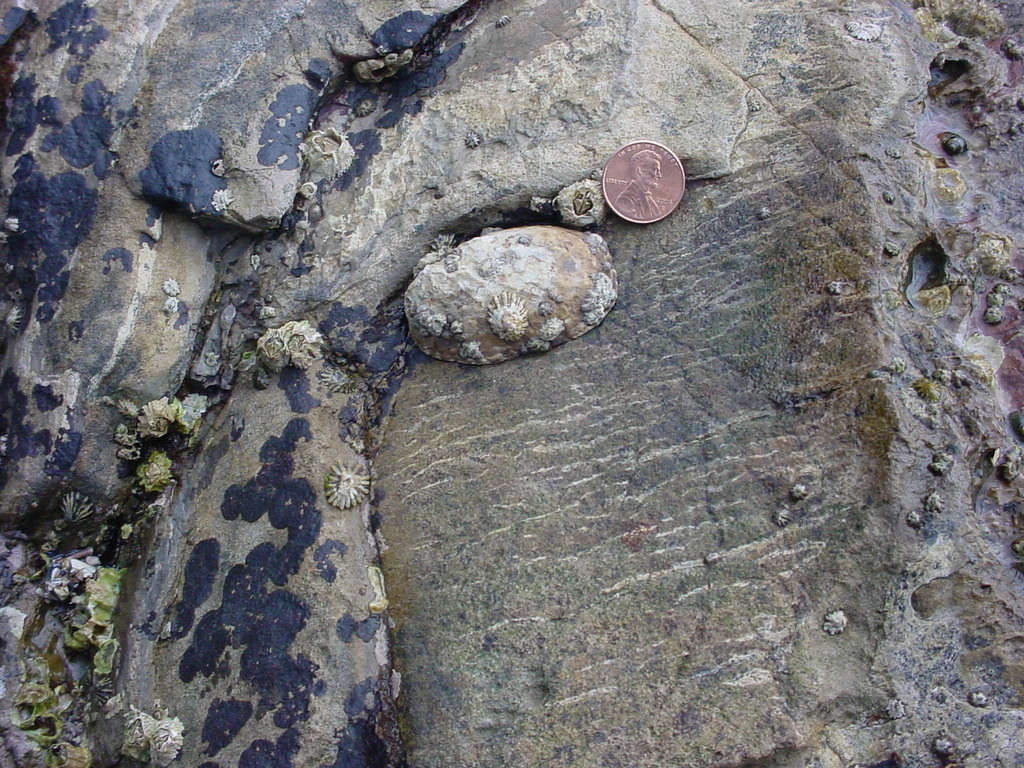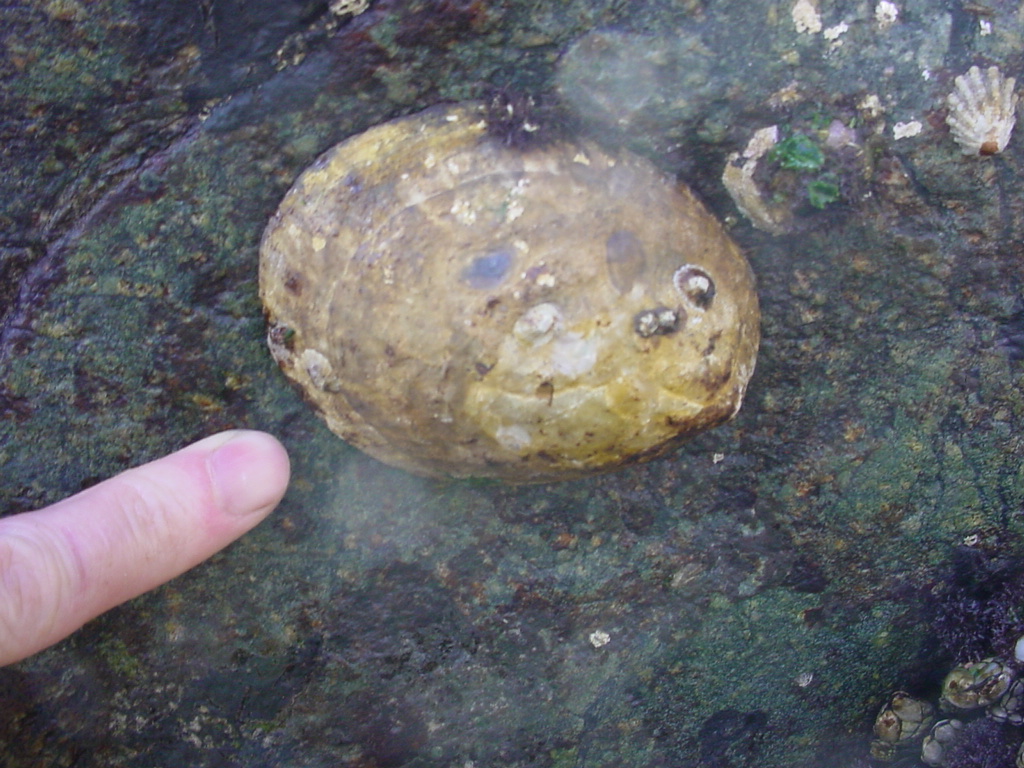Lottia gigantea Sowerby, 1834Common name(s): Owl limpet, giant owl limpet, solitary giant owl limpet |
|
| Synonyms: |  |
| Phylum Mollusca
Class Gastropoda Subclass Prosobranchia Order Patellogastropoda Suborder Nacellina Family Lottiidae |
|
| (Lottia gigantea at Dana Point, CA worn and overgrown with barnacles) | |
| (Photo by: Dave Cowles May 1999) | |
How to Distinguish from Similar Species: This limpet can grow much larger than other species on our coast. It is the only one (especially the only large one) with the apex so far anterior and lower than the highest part of the shell.
Geographical Range: Neah Bay, WA to Bahia de Tortuga, Baja California. Scarce north of San Francisco; a few found on Oregon and Washington coasts.
Depth Range: High to middle intertidal
Habitat: Rocky intertidal, on bare rocks, common on cliffs and large boulders. Solitary
Biology/Natural History: Probably breeds in fall and early winter. Large specimens 10-15 years old. This limpet is unusual not only because it is so large, but because it has mantle folds on the lower surface of the mantle (pallial gills). Pumps water over gills by cilia, left to right. Territorial. Some individuals are "homing", returning repeatedly to the same scar that exactly fit the margin of its shell. Territories are usually about 1000 square centimeters. Dislodge other limpets and small barnacles from their territory (the rock around them is usually seen to be bare except for microalgae which it grazes on but allows to grow--often in a distinctive patch). Radular teeth are hardened with the iron-containing compound geothite and have silica on their base plates. The rough limpet Colisella scabra may live on Lottia's shell.
| Return to: | |||
| Main Page | Alphabetic Index | Systematic Index | Glossary |
References:
Dichotomous Keys:
Kozloff
1987, 1996
Smith and Carlton, 1975
General References:
Kozloff,
1993
Morris
et al., 1980
Niesen,
1994
Scientific Articles:
General Notes and Observations: Locations, abundances, unusual behaviors:

This specimen is at Little Corona del Mar, Ca. Photo by Dave
Cowles, March 2005. Note the Balanus glandula
barnacle nearby
and the tar-spot algae. This indivudual is likely keeping
the rock area below it bare by grazing.

A large individual at Dana Point, CA. Photo by Dave Cowles,
March
2005. Note the convex upper surface and the apex near the
very front
(right).
Authors and Editors of Page:
Dave Cowles (2004): Created original page